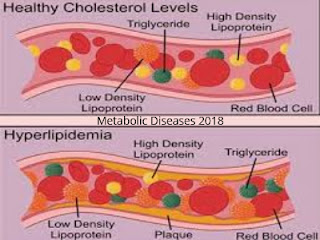Do Natural Treatments Work for Hyperlipidemia?
Hyperlipidemia
alludes to high levels of lipids in the blood. Hyperlipidemia
is a key preventable risk factor for the heart disease. It is also called as dyslipidemia
and can be diagnosed from a simple blood test but in some cases it can be
asymptomatic.
Cholesterol is a waxy fat-like substance that is a main ingredient in cell synthesis. Cholesterol is transported around in the blood stream in small packs which are made up of lipids and proteins called lipoproteins. There are two main types of lipoprotein, one called high density lipoprotein (HDL) and the other called low density lipoprotein (LDL). LDL-cholesterol makes up 60% of the entire cholesterol and is a major hazard for heart disease, while HDL-cholesterol is cardioprotective. That’s why, HDL is called good cholesterol and LDL is called bad cholesterol.
Dyslipidemia can be
caused by two main categories:
Primary hyperlipidemia: In this, individuals are inborn with a disorder of
lipid metabolism.
Secondary hyperlipidemia is caused by:
- Metabolic diseases eg type 2 diabetes
- Endocrine disorders eg hypothyroidism
- Renal disease e.g. chronic renal failure
- Liver disease e.g. alcoholic cirrhosis
- Medications e.g. antiretroviral medication used to treat HIV
·
Lifestyle
causes e.g. cigarette smoking, obesity, physical inactivity, diet rich in fats,
alcohol excess.
A wide range of natural
treatments have been promoted as effective and safe options or aides in
managing hyperlipidemia which includes fish oil, red yeast rice, chromium, niacin,
garlic, milk thistle.
- A consortium from the American Heart Association Nutrition Committee published a paper on omega-3. They checked on randomized controlled trials of omega-3 supplementation that had major cardiovascular end-points.
- Niacin (B3 or nicotinic acid) is known to reduce total triglycerides and cholesterol and also enhance HDL-cholesterol. By traditional thinking, niacin ought to offer assistance to diminish heart disease given the fact that it incorporates a positive lipid profile. But in reality niacin offered no benefits in terms of death, stroke or heart attacks.
- Chromium is a basic mineral for carbohydrate and lipid metabolism. And some researchers have evidence to prove that chromium supplementation can have a positive impact on lipid profiles in individuals with diabetes.
- It is standard hone to recommend lifestyle modifications including weight loss, healthy diet and exercise to all individuals with hyperlipidemia. Researchers have shown that exercise increases LDL size.
The genuine effect of
adjusting LDL levels (by pharmaceutical or natural means) will be very limited
if done without consideration of other related factors such as exercise, weight,
cigarette smoking etc. Equally, it may be a botch to centre just on adults.
Children are also at risk of hyperlipidemia. For many people (like these
patients), hyperlipidemia is likely best seen as an early caution framework
that alarms us to a much greater lifestyle problem.




Comments
Post a Comment